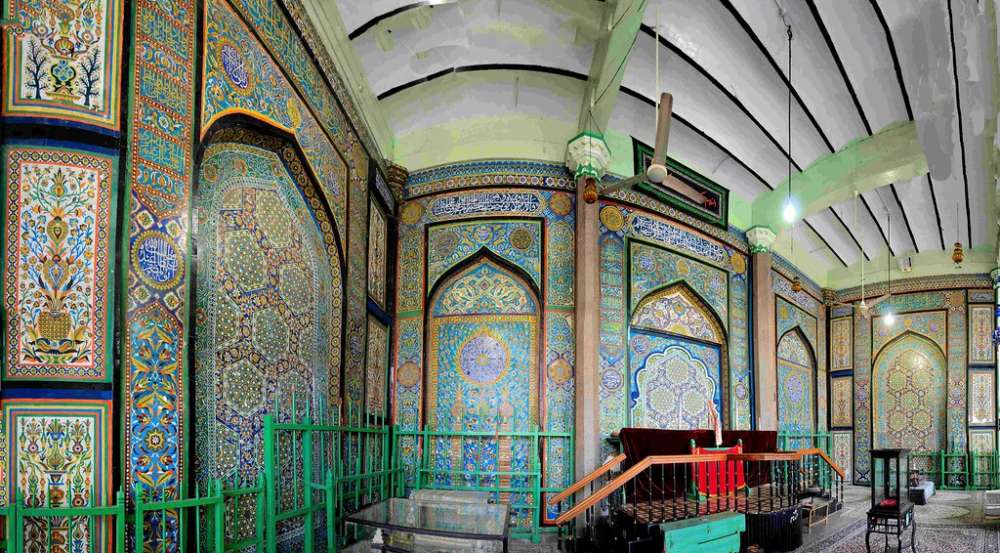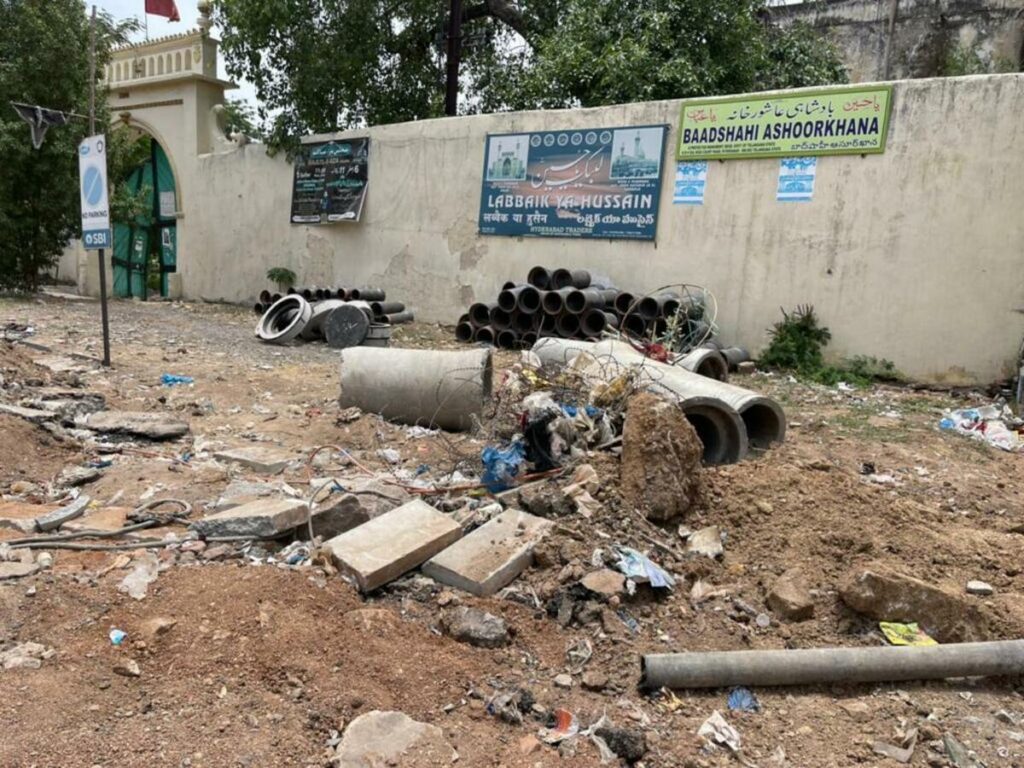
Hyderabad: After years of struggle by its administrators, the historic Badhshahi Ashurkhana will finally have its boundary wall built by the civic authorities. In response to a petition in the Telangana High Court, the Deputy Solicitor General of India on behalf of the state government told a bench that the boundary wall will be completed latest by the end of June.
The state’s response on March 26 came after the Mutawalli of the Badhshahi Ashurkhana, a 16th century structure, had filed a writ petition in 2020 seeking to erect a boundary wall to secure the heritage site. The Deputy Solicitor General of India also told the court that a compliance report will be issued latest by the last week of June.
This comes as a huge relief for the Mutawalli of the Badhshahi Ashurkhana, given that it had been encroached by hawkers and others in the past. The Shia Muslim monument would also face encroachments in the form of unauthorised parking, which for now has been stopped.
Mir Abbas Ali Moosavi, the Mutawalli Mujawer, in 2022 had written to various departments stating that if the boundary wall of the Badshahi Ashurkhana is not erected again, there is a possibility that the outer area of the monument may be encroached by the ”politically influenced encroachers”.
Moosavi then also claimed that former encroachers of the place were trying to erect a religious (Islamic) flag of a different sect, after the historical structure’s outer boundary wall was partially taken down by the water board under the pretext of taking up sewer works.
Officials of the Hyderabad Metropolitan Water Supply and Sewerage Board (HMWSSB) in 2022 had taken down the outer boundary wall of the 429-year-old monument stating it had to be done to undertake sewerage works in the area. However, the Badshahi Ashurkhana’s administrators then pointed out that the boundary wall and the monument are in fact subject matter to a court ruling.

Significance of the Badshahi Ashurkhana
The Badshahi Ashurkhana is the second structure built in Hyderabad after the city was founded by Mohd Quli Qutb Shah (fourth king of the Golconda dynasty) in 1591. The monument, which is a Shia Muslim mourning place, primarily used during Muharram, goes back to 1592. It is a very important heritage site given that it was built by the founding king himself, and it still continues to be in use.
Like other Ashurkhanas, this one too saw bad days for nearly a century after the Qutb Shahi dynasty fell to Aurangzeb’s army in 1687. The Qutb Shahi kings of Hyderabad were Shia Muslims. It wasn’t until Nizam Ali (the second monarch of the Asaf Jahi dynasty) came to power that the Badshahi Ashurkhana was given an annual grant.
An Ashurkhana is where Shia Muslims mourn during Ashura, the 10th of Muharram. The place is dedicated to Imam Hussain, a grandson of the prophet Muhammad who was killed in the battle of Karbala. Hussain was the son of Imam Ali, the prophet’s son-in-law (and cousin).
